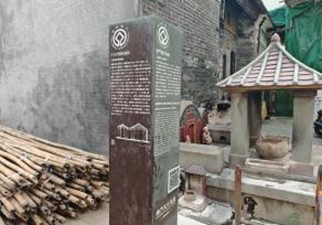Research on the Cross-cultural Adaptation of the Signage System in Macao's Historical Districts to Multiple Groups
Abstract
The historical district wayfinding system in Macau, as a carrier of the integration of Chinese and Portuguese cultures, faces perceptual differences and functional demand conflicts among three groups: residents, tourists and students. The study, based on 231 mixed questionnaires (including open-ended questions) and field research, focused on the front of the Legislative Assembly (the core tourist area), the Red Market and the Sa Lai Tou district (the residential area), quantitatively analyzed the visual sensitivity, emotional acceptance and functional requirements of the three groups towards Portuguese elements. The study found that the frequency of cultural exposure drove the three groups to show stratified characteristics of "identity-oriented - experience-oriented - cognition-oriented". Based on the integrated data, an optimized strategy of symbolic function adaptation, emotional stratified response, and cultural progressive interpretation was proposed, and scenario-based solutions were designed for the two typical blocks to provide theoretical references for the design of wayfinding systems in multicultural cities.
References
[2] Wang, Z., Deng, C., & Zhao, Y., et al. (2024). Macau historical block space form analysis and protection update research. Journal of Hunan Packaging, 33(4), 138-140. https://doi.org/10.19686/j.carolcarrollnki.issn1671-4997.2024.04.032
[3] Tang, L. (2003). A comparative study of urban open spaces - Nanjing and Hong Kong [Doctoral dissertation, Southeast University]. https://doi.org/10.7666/d.y581983
[4] Li, X. (2014). Berry's theory of cultural adaptation and its implications. Journal of Hubei Correspondence University, (18), 83-84. https://doi.org/10.3969/j.issn.1671-5918.2014.18-043
[5] Liu, H., & Xing, Y. (2025). Environmental behavior under the perspective of tourism and leisure blocks research to the influential factors of tourists behavior. Journal of Urban Architecture, 22(4), 39-42. https://doi.org/10.19892/j.carolcarrollnki.csjz.2025.04.11
[6] Zhang, B., & Liang, H. (2024). Research on spatial-oriented design from the perspective of semiotic theory. Architecture and Culture, (3), 272-274. https://doi.org/10.19875/j.carolcarrollnki.jzywh.2024.03.085
[7] Wu, Y. (2021). Research on the design of experiential wayfinding systems in urban micro-renovation: A case study of the old Nan Tang Street in Ningbo [Master's thesis, Donghua University].
[8] Lang. (2013). Research on the characteristics and conservation strategies of urban form in Macao [Doctoral dissertation, Guangdong University of Technology]. https://doi.org/10.7666/d.Y2305352
[9] An, C., & Liu, J. (2025). Research on the design of public commercial space based on the concept of environmental behavior. Architecture and Culture, (2), 143-145. https://doi.org/10.19875/j.carolcarrollnki.jzywh.2025.02.043


This work is licensed under a Creative Commons Attribution 4.0 International License.
Copyright for this article is retained by the author(s), with first publication rights granted to the journal.
This is an open-access article distributed under the terms and conditions of the Creative Commons Attribution license (http://creativecommons.org/licenses/by/4.0/).








1.png)














